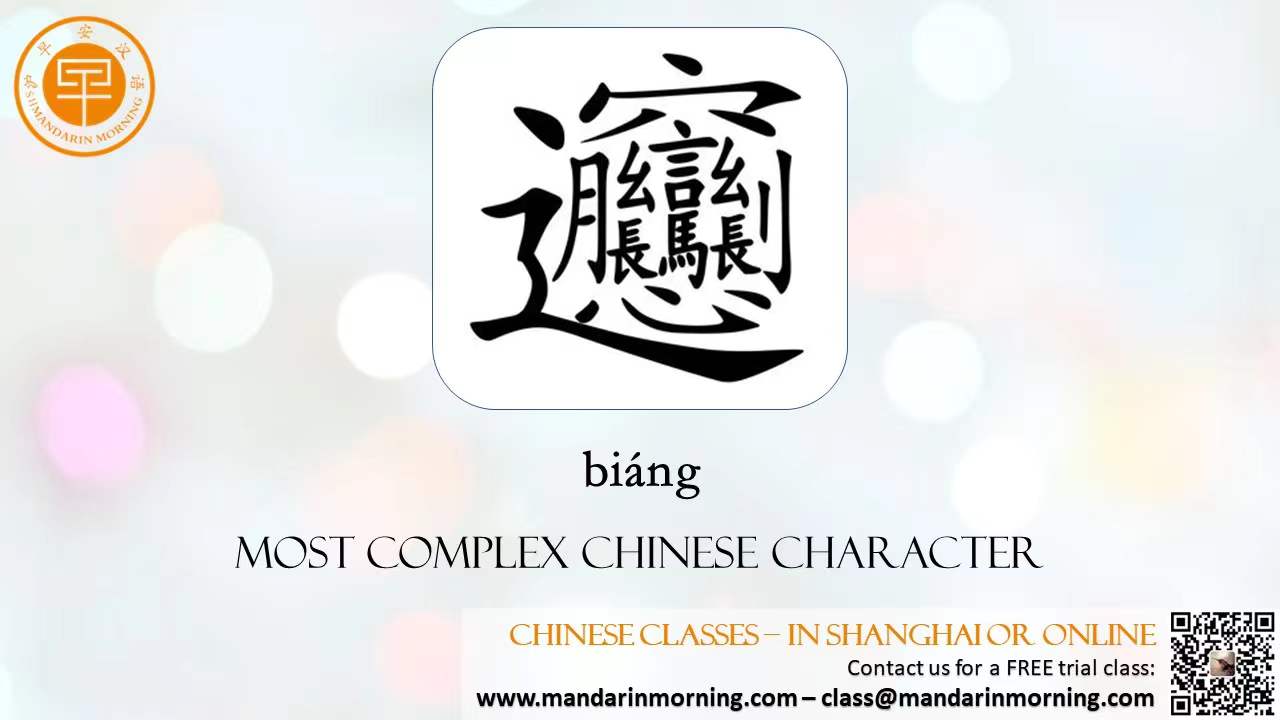| Chinese Characters can be really complicated, but actually every character is built up using a series of radicals and strokes which means even the most ridiculous looking characters all have their logic. Let’s check out some more of the most complicated Chinese characters: Quán 颧 (Cheekbones) The character for cheekbones is certainly not the most complex on the list but still, so, many, strokes! 24 strokes in total! Look at the left side of the character, there are two squares next to each other that almost resemble cheeks, maybe that’s the hack you need to remember this one!  BIANG – Too complex to type BIANG – Too complex to typeIt’s got so many strokes that typing this in normal computer font would just lead to the character being illegible. The traditional character boasts 58 strokes, and the simplified one 43. It easily wins the award for most complex Chinese character. To add to the fun, the word BIANG (for the famous noodle dish) is listed TWICE in the dish BIANG BIANG MIAN. Due to the complex nature of this character most restaurants simply write this on the menu: Biang Biang Mian – BIANGBIANG 面 Tāotiè 饕餮 (Glutton, Ravenous Eater) One of those examples that you try to copy with pen and paper and don’t even know where to start. It looks almost impossible to remember, but as is so often, there is sound logic we can apply here. The word for food/food products is 食物/食品 shíwù/shípǐn. Let’s take the common denominator out of those two, being the first character 食 shí. Notice anything about this character and our example above? You got it, the character appears at the bottom of each of the two characters for the word voracious eater/glutton, how ironic! |